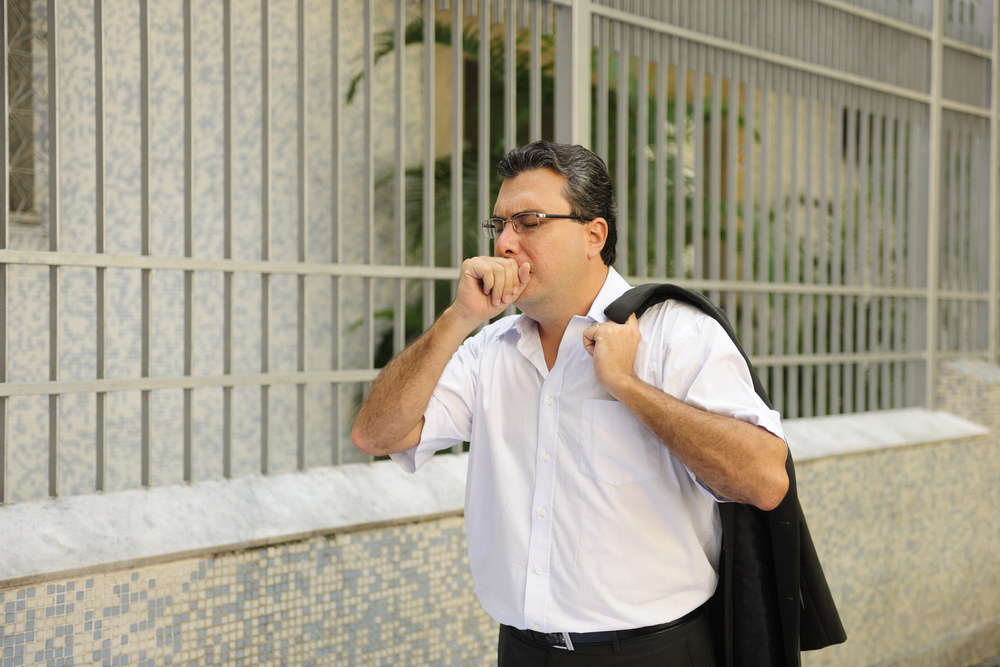COPD May Worsen with Indoor Air Pollution Combined with High Temps

A new research study suggests that high indoor temperatures could worsen the symptoms of chronic obstructive pulmonary disease (COPD), particularly in homes with high levels of air pollutants.
Johns Hopkins University researchers conducted a longitudinal study including 69 patients with moderate-to-severe COPD during the hottest days of the year. The results of the study were published in the Annals of the American Thoracic Society (ATS) under the title “Respiratory Effects of Indoor Heat and the Interaction with Air Pollution in COPD.”
A prior study of air pollution and its link to higher levels of outdoor fine particulate matter (PM2.5) and ozone in cities across the United States reported that as temperatures rise due to global warming air pollutants should be mitigated to below the limits set by the Environmental Protection Agency (EPA). The result would be fewer serious illnesses, and possibly thousands of lives saved.
But the recent study looked at how indoor air pollutants combined with higher temperatures impact vulnerable populations, specifically elderly people with COPD.
“Previous studies have found that the elderly are particularly vulnerable to the effect of heat and more likely to die or be hospitalized during heat waves,” Dr. Meredith C. McCormack, lead study author and an associate professor of medicine at Johns Hopkins, said in a press release. “Our study builds on these findings by investigating exposure at the individual level, including in-home assessment of temperature and specific health effects of COPD. To our knowledge, this is the first study to report an interactive effect between indoor temperature and indoor air pollution in COPD.”
All 69 COPD patients in the cohort analyzed completed a questionnaire every day to assess their respiratory symptoms. The questionnaire included the Breathlessness Cough and Sputum Scale (BCSS) to standardize measurements. Participants were also asked to perform daily spirometry to evaluate lung function, and they tracked their use of rescue inhalers to manage symptoms.
The research team then crossed the information with outdoor temperatures and with indoor measurements of PM2.5 and nitrogen dioxide (NO2), two air pollutants.
The study’s findings revealed that:
- All participants spent most of their time indoors and if they did go out, they would not spend more than two hours outdoors.
- Higher indoor temperatures led to worsened BCSS scores, as well as an increased need to use rescue inhalers.
- High levels of PM2.5 and NO2 were seen to magnify the effects of higher indoor temperatures on study’s participants – a 10º increase in temperature indoors at 75% of PM2.5 concentration levels increased symptoms severely, whereas at 25% PM2.5 concentration levels the symptoms only increased mildly.
- The effects of higher indoor temperatures were felt immediately and lasted for one or two days.
- Even though 86% of the study’s participants lived in a home equipped with some sort of air conditioning, they did not use it for 37% of the study days.
- Lung function was seemingly unaffected by higher temperatures or increased levels of air pollutants indoors.
McCormack added that respiratory symptoms also increased for patients who spent some time outdoors, even if just for short periods of time.
“Given that participants spent an overwhelming majority of their time indoors, which we believe is representative of patients with COPD generally, optimizing indoor climate and reducing indoor pollution represents a potential avenue for improving health outcomes,” McCormack concluded.






